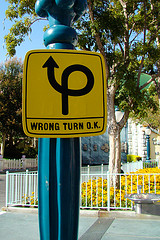I know that I can use EFT to help me get what I want in my life, but I don’t know how. Do you have any suggestions?
[Note: This is article number three in a four-part series on how to get what you do want. In this article we will look at the third of four steps in using EFT to change aspects of our lives.]
So far we have looked at What We Don't Want and Knowing What We Do Want. Both of these steps are very important in making all types of changes in our lives, whether big or small.
There are countless books and on-line resources to help you to make changes to your life to get what you want. Almost without exception they define a process similar to the one outlined in steps one and two of naming what we want.
The problem? This is where most of them stop. Creating lists of goals (which is basically what we have done thus far) have been proven time and again to move us closer to the changes we want to see in our lives.
But this is not enough. If it were really as easy as simply writing down what we want to accomplish then our “To Do” list would get done everyday. If you’re like me, this just doesn’t happen.
Getting into shape is a perfect example of how writing lists of goals is not enough. There is very little mystery to getting into shape. We need to find a little time three or four times a week and do some exercise.
Getting into shape is a perfect example of how writing lists of goals is not enough. There is very little mystery to getting fit. We need to schedule in exercise three or four times a week. That’s all. Yet so many of us can’t stick with this relatively simple goal.
So what’s really the problem? It’s not clarity of the goal. We’ve identified that. It’s not coming up with an exercise plan. Even if we have no experience with exercise, finding the steps of a good beginner program are just a few clicks of a computer mouse away. For most of us the issue isn’t even the time it takes. Most of us can find 20 minutes three days a week to exercise.
[Note: Some goals and changes we might wish to make will involve steps we can’t identify easily. We will address these types of goals in step four.]
The problem? Generally it’s emotional blocks that keep us from following through on our goals.
There are three basic types of emotional blocks: believing we are not capable of achieving the goal, believing we are not worthy of achieving the goal, and believing there is a penalty for achieving the goal. Let’s look at these one at a time.
Not Being Capable: This occurs when we have the emotional belief that the goal is too big for us. We might easily see others achieving this goal, but we honestly doubt it is possible for us. In many cases we are intellectually able to see this belief is wrong. We know logically that we can work out regularly to get into shape, but part of us believes “I don’t have the will power to work out three times a week.” Because we have the belief it is not possible for us, something in us prevents us from acting so we don’t try something at which we are inevitably going to fail.
Not Being Worthy: This is a subtler emotional block than not being capable. With this emotional block we believe it is possible to have something better, but for some reason we can’t believe that we are worthy of this sort of change. The emotional block can best be summarized in belief statements like: “I have it so much better than others. I shouldn’t ask for more.‚” “I don’t work hard enough to deserve that.” Because we believe we are not worthy of the goal we will prevent ourselves from acting.
Believing There Is A Penalty: When we have this emotional block we expect to suffer negative consequences for achieving our goal. Some of these beliefs are: “If I achieve this, people are going to keep expecting better things from me and I will let them down.” “If I achieve this goal I may backslide and then I’ll feel worse.” “If I achieve this goal my friends/family are going to be jealous.” “If I achieve this goal it will mean more (unwanted) work for me.” Because part of us believes that achieving this goal is going to cause us some sort of problem, we block ourselves from taking the steps to achieve the goal. Of the three basic types of emotional blocks this is often the most difficult to name.
As we know, Emotional Freedom Techniques (EFT) is an excellent tool for clearing emotional blocks like the three types sketched out above. Doing this is very simple. We now apply three questions to each of the characteristics of what we want.
The questions are based on the three types of emotional blocks. These questions are very powerful, even though they seem quite obvious. They are:
- Why don't I think I am capable of achieving this?
- Why don't I think I am worthy of achieving this?
- What is the worse thing that could happen if I achieve this?
To see how this works, let’s take the example of finding a better job from parts one and two of this series. In part two we created this list of things we would like to see in our future job.
- I am energized when I leave work, and not just because I am leaving but because I have enjoyed the workday.
- I look forward to going to work.
- I am appreciated and valued by my supervisor and coworkers for my contribution.
- I enjoy the job and learn form it.
- I am paid more than enough to take care of my family’s needs and wants.
- The workday allows me to spend time with my family and to do the activities I enjoy.
- There is no unexpected overtime or radical unexpected changes to the schedule.
- I see my family and friends enough to develop and maintain loving nurturing relationships.
- The job challenges me creatively.
To do this process we take each of these statements one at a time. We’ll look at the first statement as an example.
I am energized when I leave work, and not just because I am leaving but because I have enjoyed the workday
Why don't I think I am capable of achieving this?
Work is hard.
Work isn't enjoyable, that is why it called work.
It is not possible to do work and leave with energy because it is work.
Why don't I think I am worthy of achieving this?
If work is easy then I am not pulling my weight.
If work was supposed to be easy and enjoyable I won't be work.
What is the worse thing that could happen if I achieve this?
If I am not working hard, my family will think I am lazy.
This process is repeated for each of the statements. Keep in mind two points. First, you will find a great deal of overlap as you name emotional blocks. Some of them might appear for every single part of your goal. Second, you might not come up with emotional blocks for each question. For some parts of your goal you might find only one or two emotional blocks, while for others there might be no emotional blocks at all.
Once the emotional blocks are named we can now use EFT to go after each one. You will do this in the exact same way you would go after any other limiting belief. Let’s take the blocking emotional belief, “Work isn’t enjoyable, that’s why it’s called work,” for example. The tapping phrases might look like this:
My whole life I’ve been told work is hard… lots of people in my life and my family complain about work all the time…they call it work for a reason…it is supposed to be hard…part of everyday conversation is complaining about work…it almost becomes a competition to see whose life is harder…I know there are people who love their jobs…they have found the exact right thing for them to do… that doesn’t mean that their work isn’t hard…but they find joy in what they are doing…because they find joy it doesn’t feel like it’s hard…they are not taking a shortcut or cheating…instead they have found something enjoyable that also pays the bills. [How to use these tapping phrases]
Clearing these emotional blocks isn’t generally going to happen in one tapping session, though it is possible). It’s best to set aside a little time each day to work on these emotional blocks.
So far we have looked at naming what we don’t want, naming what we do want, and naming and getting clear of the emotional blocks that prevent us from moving forward. In the last article of this series we will look at taking action to achieve these goals.
Getting what we want into our lives:
- Knowing what we don't want
- Knowing what we want
- Getting clear of emotional blocks (this step)
- Taking inspired action












